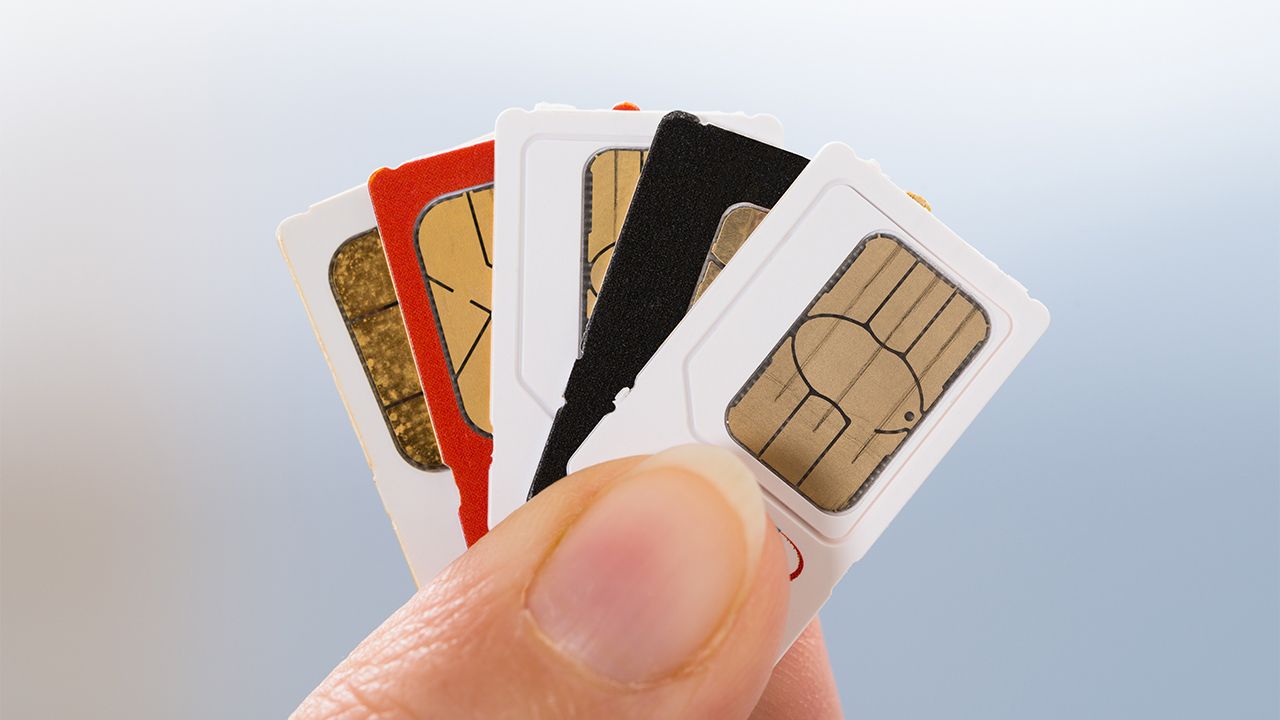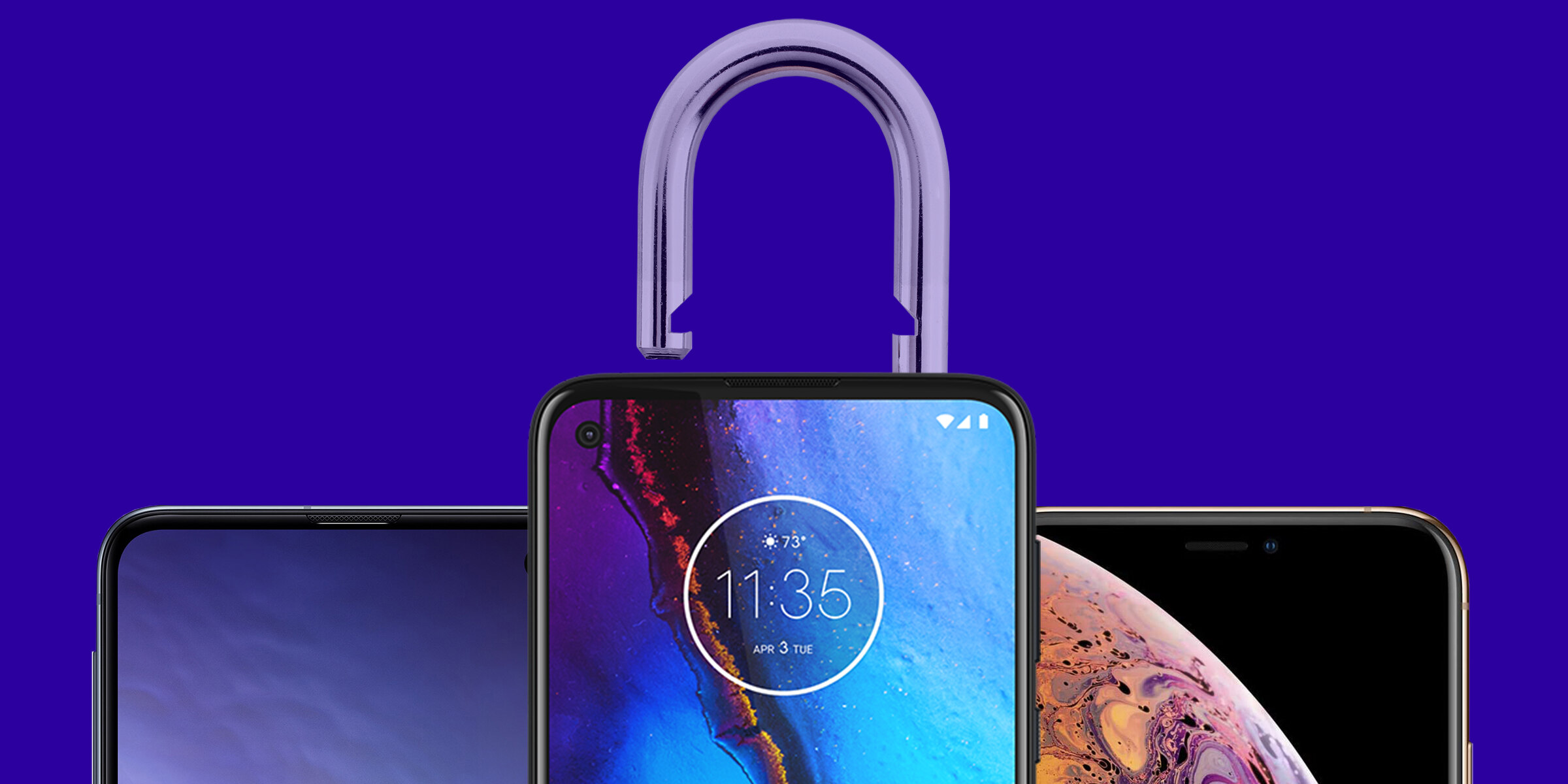Introduction
Welcome to the world of smartphones! These handy devices have become an integral part of our daily lives, offering a multitude of features and functions. But have you ever wondered what makes your smartphone unique from others? Behind the sleek design and advanced technology lies a hidden identifier known as the Electronic Serial Number, or ESN.
The ESN is a unique identification number assigned to each individual smartphone. It serves as a digital fingerprint, enabling mobile carriers and manufacturers to differentiate between devices. In essence, it is like an identification card for your smartphone, allowing it to connect to cellular networks and access various services.
While you may not think much about the ESN, it plays a crucial role in the functioning of your smartphone. In this article, we will explore the definition, purpose, types, and importance of the ESN. We will also delve into how the ESN works on a smartphone, along with its advantages, disadvantages, and any exceptions that apply.
So, let’s dive into the fascinating world of ESNs and uncover the secrets behind this vital component in your smartphone!
Definition of ESN
The Electronic Serial Number, commonly known as ESN, is a unique identifier assigned to a mobile device. It serves as a digital fingerprint that distinguishes one device from another. Similar to a Social Security number or a driver’s license, the ESN provides a way to uniquely identify and track each smartphone.
The ESN is typically a combination of letters and numbers and can vary in length, depending on the device and the technology it uses. In modern smartphones, the ESN is often referred to as the IMEI (International Mobile Equipment Identity) number or the MEID (Mobile Equipment Identifier).
Mobile carriers and manufacturers utilize the ESN to keep track of devices on their network, prevent theft, and ensure compliance with regulatory requirements. It allows carriers to activate, deactivate, and monitor individual devices, as well as provide support and service based on the device’s unique identifier.
Additionally, the ESN helps in identifying lost or stolen smartphones and can be used to blacklist the device, rendering it unusable on any network. This security measure helps protect user privacy and prevent unauthorized use of stolen devices.
The ESN is typically located in the phone’s settings, on the packaging, or on a sticker beneath the battery. It is important to note that the ESN is tied to the hardware of the device and cannot be easily altered or manipulated.
In summary, the ESN is a unique identifier assigned to mobile devices, serving as a digital fingerprint that allows carriers and manufacturers to differentiate between devices, track their usage, and provide services. It is a vital component in the functioning and security of smartphones.
Purpose of ESN
The Electronic Serial Number (ESN) serves several important purposes in the world of smartphones. Let’s explore the key functions and significance of the ESN:
1. Device Identification: One of the primary purposes of the ESN is to uniquely identify each smartphone. With millions of devices in circulation, the ESN allows mobile carriers and manufacturers to differentiate between them. This enables them to provide specific services, support, and maintenance tailored to each device.
2. Network Activation: The ESN plays a vital role in activating smartphones on cellular networks. When you purchase a new device, the ESN is registered with your mobile carrier, allowing your phone to connect to their network. This activation process ensures that your smartphone is authorized to make calls, send texts, and access data services.
3. Device Tracking and Security: The ESN aids in tracking and securing smartphones. In the event of theft or loss, the unique ESN enables mobile carriers and law enforcement agencies to identify and blacklist the device. This makes it difficult for thieves to use stolen smartphones on any network, protecting user data and deterring theft.
4. Warranty and Service: The ESN is often used by manufacturers to determine warranty eligibility and provide customer support. By verifying the ESN, manufacturers can identify if the device is still covered under warranty and offer necessary repairs or replacements. This ensures that users receive timely assistance for any hardware issues.
5. Compliance and Regulation: The ESN helps mobile carriers and manufacturers comply with regulatory requirements. It allows them to track and monitor devices to ensure compliance with local regulations and industry standards. This is particularly important for devices that require specific certifications or meet certain technical criteria.
Overall, the purpose of the ESN is to enable device identification, network activation, tracking, security, warranty management, and regulatory compliance. It is a crucial component in ensuring the smooth functioning and security of smartphones in our modern digital age.
Types of ESN
The Electronic Serial Number (ESN) comes in different forms based on the type of mobile technology used in a smartphone. Let’s explore the two primary types of ESN:
1. IMEI (International Mobile Equipment Identity): The IMEI is the most common type of ESN used in modern smartphones. It is a unique 15-digit number assigned to each device and is recognized internationally. The IMEI can be found in the phone’s settings, on the packaging, or on a sticker beneath the battery. It is used to identify GSM (Global System for Mobile Communications) and WCDMA (Wideband Code Division Multiple Access) devices.
2. MEID (Mobile Equipment Identifier): The MEID is an ESN used in CDMA (Code Division Multiple Access) devices. It is a unique identifier similar to the IMEI but consists of 14 digits and an additional hexadecimal character. The MEID can also be found in the phone’s settings or on the device itself. It is used by CDMA-based mobile carriers to activate and identify devices on their network.
While the IMEI and MEID are the most common types of ESNs, it’s important to note that some older devices may have different formats of ESNs based on the technology used during their time. It is also worth mentioning that some smartphones have a dual SIM capability, meaning they can accommodate multiple SIM cards for different networks or purposes. In such cases, each SIM card slot may have its own ESN.
These various types of ESNs ensure that smartphones can be uniquely identified and authenticated, allowing mobile carriers to provide accurate services and support. Whether it’s a GSM or CDMA device, the ESN plays a critical role in ensuring seamless connectivity and compatibility with the respective network technology.
Importance of ESN
The Electronic Serial Number (ESN) holds significant importance in the world of smartphones. Let’s explore why the ESN is crucial and the ways in which it impacts the functioning of these devices:
1. Unique Device Identification: The ESN provides a unique identifier for each smartphone, enabling mobile carriers and manufacturers to differentiate between devices. This identification is essential for activating devices on networks, tracking usage, and providing specific services and support to individual users.
2. Theft Deterrence and Device Recovery: The ESN plays a vital role in preventing smartphone theft and aiding in device recovery. By blacklisting stolen devices based on their ESN, mobile carriers make it nearly impossible for thieves to use the devices on any network. This discourages theft and enhances consumer trust in smartphone security.
3. Network Compatibility and Activation: The ESN ensures compatibility between smartphones and mobile networks. It acts as a verification tool during network activation, allowing mobile carriers to authenticate and authorize devices to connect to their networks. This process enables users to access voice, data, and other network services seamlessly.
4. Customer Support and Warranty Management: The ESN is instrumental in providing customer support and managing warranties for smartphones. By identifying the device using its ESN, manufacturers can determine warranty eligibility and offer necessary repairs or replacements. This ensures that users receive efficient and timely support for any hardware issues.
5. Regulatory Compliance and Security: The ESN plays a vital role in ensuring regulatory compliance and enhancing smartphone security. Mobile carriers and manufacturers use the ESN to track and monitor devices, ensuring adherence to local regulations and industry standards. This helps in maintaining a secure and trustworthy mobile ecosystem.
6. Device Management and Inventory Tracking: The ESN assists in managing smartphone devices and tracking their inventory. Mobile carriers and manufacturers can use the ESN to monitor device distribution, track device locations, and manage device lifecycles effectively. This enables them to streamline operations, improve inventory management, and provide accurate analytics.
In summary, the ESN holds immense importance in the world of smartphones. It allows for unique device identification, enables theft prevention and device recovery, ensures network compatibility, provides customer support and warranty management, facilitates regulatory compliance, and aids in device management and inventory tracking. Understanding the significance of the ESN helps users appreciate the intricate mechanisms that make their smartphones function seamlessly and securely.
How ESN Works on a Smartphone
The Electronic Serial Number (ESN) is a vital component that facilitates the functioning of a smartphone. Let’s explore how the ESN works and the mechanisms behind its operation:
1. Device Identification: When a smartphone is manufactured, it is assigned a unique ESN. This identifier is embedded in the device’s hardware and is used to distinguish it from other smartphones. The ESN is typically stored in a non-volatile memory chip within the device, ensuring its persistence even if the battery is removed.
2. Network Activation: When a user purchases a new smartphone, the ESN is registered with a mobile carrier. During the activation process, the mobile carrier integrates the ESN into its network to allow the smartphone to establish a connection. This allows the user to make calls, send texts, and access data services provided by the carrier.
3. Communication with the Network: The ESN plays a crucial role in facilitating communication between the smartphone and the mobile network. When the user initiates a call or data transfer, the smartphone transmits the ESN to the mobile network, which verifies the device’s authenticity and authorizes network access. This two-way communication ensures a secure and seamless connection between the smartphone and the network.
4. Security Features: The ESN is a fundamental component in the implementation of security features on smartphones. Mobile carriers can use the ESN to blacklist stolen devices, rendering them unusable on any network. Additionally, the ESN is often used in conjunction with other security measures, such as device passcodes and encryption, to protect user data and prevent unauthorized access.
5. Device Tracking and Management: The ESN enables mobile carriers and manufacturers to track and manage smartphones efficiently. By monitoring ESNs, carriers can gather valuable information regarding device usage, location, and performance. This information aids in managing network resources, identifying potential issues, and providing targeted customer support.
6. Upgrade and Replacement: The ESN is used when upgrading or replacing smartphones. When a user upgrades to a new device, the ESN of the old device may need to be transferred to the new device to maintain continuity of services. Likewise, if a device needs to be replaced due to damage or malfunction, the ESN is used to ensure that the new device is seamlessly integrated into the network.
In summary, the ESN works by providing a unique identifier for a smartphone, facilitating network activation and communication, enabling security features, supporting device tracking and management, and aiding in device upgrades and replacements. Understanding how the ESN operates on a smartphone helps users appreciate its role in ensuring seamless connectivity and functionality.
Advantages of ESN
The Electronic Serial Number (ESN) offers several advantages in the realm of smartphones. Let’s explore the key benefits that the ESN brings to users, mobile carriers, and manufacturers:
1. Device Tracking and Recovery: The ESN plays a vital role in tracking and recovering lost or stolen devices. By blacklisting the ESN of a stolen smartphone, mobile carriers make it difficult for thieves to use the device on any network. This increases the chances of recovering the device and ensures the protection of personal information.
2. Enhanced Security: The ESN is a crucial component in smartphone security measures. By using the ESN in conjunction with device passcodes and encryption, users can protect their data from unauthorized access. If a smartphone is lost or stolen, the ESN can be used to remotely lock or wipe the device, ensuring sensitive information remains secure.
3. Warranty and Support: The ESN is used by manufacturers to determine warranty eligibility and provide customer support. When users encounter issues with their smartphones, manufacturers can verify the ESN to determine if the device is still covered under warranty. This ensures that users receive timely assistance and necessary repairs or replacements.
4. Network Compatibility: The ESN ensures that smartphones are compatible with specific mobile networks. By registering the ESN with a mobile carrier, users can activate their devices and access voice, messaging, and data services. This compatibility ensures a seamless connection and enhances the overall user experience.
5. Device Differentiation: The ESN allows mobile carriers and manufacturers to differentiate between individual smartphones. This differentiation helps in providing specific services, support, and updates based on the unique attributes of each device. It ensures that users receive tailored features and optimizations relevant to their specific smartphone model.
6. Regulatory Compliance: The ESN helps mobile carriers and manufacturers comply with regulatory requirements. By tracking and monitoring devices via their ESNs, carriers can ensure adherence to local regulations and industry standards. This is particularly important for devices that require specific certifications or meet certain technical criteria.
7. Efficient Device Management: The ESN aids in efficient device management for mobile carriers and manufacturers. By tracking ESNs, they can effectively manage inventory, monitor device usage patterns, and analyze performance data. This information allows for better resource allocation, improved network planning, and enhanced customer support.
In summary, the advantages of the ESN include device tracking and recovery, enhanced security features, warranty and support eligibility, network compatibility, device differentiation, regulatory compliance, and efficient device management. Understanding these advantages helps users appreciate the value that the ESN brings to their smartphone experience.
Disadvantages of ESN
While the Electronic Serial Number (ESN) offers numerous advantages, there are also some disadvantages associated with its use in smartphones. Let’s explore the potential drawbacks of the ESN:
1. Limited Device Portability: The ESN can sometimes limit device portability across different mobile carriers. If a smartphone is locked to a specific carrier through its ESN, it may not be able to be used with other carriers without unlocking or obtaining permission. This restriction can be inconvenient for users who wish to switch carriers without changing their smartphones.
2. Vulnerability to Cloning: In the past, some mobile devices with weaker ESN security measures were vulnerable to cloning. Cloning involves copying the ESN of a legitimate device onto another device, allowing unauthorized access to network services. While advancements in ESN security have mitigated this risk, it remains a potential disadvantage, albeit rare, in some older devices.
3. Limited Device Customization: The ESN can limit the extent to which users can customize their smartphones. Mobile carriers often impose restrictions on certain features or settings based on the ESN of the device. This can prevent users from fully customizing their devices to suit their preferences or needs.
4. Device Obsolescence: As technology advances, older devices with specific ESN formats may become obsolete. Mobile networks may phase out certain technologies, making devices with incompatible ESNs unable to connect to newer networks. This can result in the need to upgrade to a newer device that supports the latest network technologies.
5. Complex Device Activation: In some cases, the process of device activation using the ESN can be cumbersome or time-consuming. Users may need to contact their mobile carrier or follow a specific procedure to activate their smartphones. This additional step can be seen as a disadvantage, particularly for users seeking a streamlined and hassle-free setup process.
6. Challenges for Second-Hand Devices: The unique ESN tied to each smartphone can pose challenges for second-hand devices. If a device’s ESN is flagged or blacklisted due to loss or theft, the device may become difficult to sell or use. Buyers need to verify the device’s ESN status to ensure they are purchasing a legitimate and fully functional device.
It’s important to note that many of these disadvantages are specific to certain situations or limited to older devices. The advancement of technology and tighter security measures surrounding ESNs have addressed many of these concerns, resulting in a more secure and user-friendly smartphone experience.
Ultimately, while there are some potential disadvantages associated with the ESN, the benefits and functionalities it provides outweigh these drawbacks for the majority of users.
Exceptions to ESN
While the Electronic Serial Number (ESN) is a widespread identifier used in smartphones, there are certain exceptions and scenarios where the ESN may not apply or have limited impact. Let’s explore some of the exceptions to the standard use of ESN:
1. Non-Networked Devices: The ESN primarily applies to devices that connect to mobile networks. However, there are non-networked devices, such as Wi-Fi-only tablets or certain e-readers, that do not require an ESN for network activation or communication. These devices rely on other unique identifiers or connectivity methods.
2. Landline Phones: Traditional landline phones do not utilize ESNs as they are not mobile devices. Landline phones connect directly to physical phone lines and do not require ESNs for network activation or identification. Instead, landline phones may have other unique identifiers, such as phone numbers or MAC addresses.
3. IoT Devices: Internet of Things (IoT) devices, such as smart home devices, wearables, or connected appliances, may have alternative identification methods instead of ESNs. These devices often utilize technologies like Bluetooth, Wi-Fi, or other specialized communication protocols to connect to networks, and their identification may be based on MAC addresses or unique device identifiers (UDIDs).
4. Virtual SIMs and eSIMs: With the advancement of technology, virtual SIM cards or embedded SIMs (eSIMs) have emerged, allowing users to switch between mobile networks without physical SIM cards. For devices using virtual SIMs or eSIMs, the ESN may not be as prominent, as the identification and activation processes are different and rely on separate encryption and authentication mechanisms.
5. Cross-Carrier Device Compatibility: In some cases, smartphones may support multiple carriers and network technologies, referred to as cross-carrier compatibility. These devices may have flexible ESNs or identification methods that allow them to be used with different carriers or network technologies without the need for unlocking or specific activation procedures.
It’s important to note that although certain exceptions exist, the majority of smartphones and mobile devices still rely on ESNs or similar unique identifiers for activation, tracking, and communication with mobile networks. However, as technology continues to evolve, we may see further variations and exceptions in the use of ESNs, particularly as more advanced connectivity options are introduced.
Understanding the exceptions to ESN usage helps to provide a broader perspective on the diverse range of devices and connectivity methods in the modern tech landscape.
Conclusion
The Electronic Serial Number (ESN) is a crucial component that facilitates the functionality and management of smartphones. From device identification and network activation to security features and device tracking, the ESN plays a pivotal role in the seamless operation of these devices.
We’ve explored the definition, purpose, types, advantages, disadvantages, exceptions, and the way in which the ESN works on a smartphone. The ESN serves as a digital fingerprint, allowing mobile carriers and manufacturers to uniquely identify devices, activate them on networks, provide tailored services, and ensure compliance with regulations.
The ESN offers a range of benefits, such as device tracking and recovery, enhanced security, warranty and support eligibility, network compatibility, device differentiation, regulatory compliance, and efficient device management. However, there are also some considerations, including limited device portability, vulnerability to cloning (in older devices), and potential restrictions on device customization.
While exceptions exist, such as non-networked devices and IoT devices with alternative identification methods, the vast majority of smartphones heavily rely on ESNs for their operation and connectivity. As technology continues to evolve, we may witness further advancements and exceptions in the use of ESNs, accommodating emerging connectivity options.
Overall, the ESN remains a crucial component in the world of smartphones, enabling seamless communication, enhancing security, and providing a foundation for efficient device management. Understanding the significance and functionalities of the ESN empowers users to make informed decisions, stay connected, and enjoy the multitude of features and services offered by their smartphones.

























